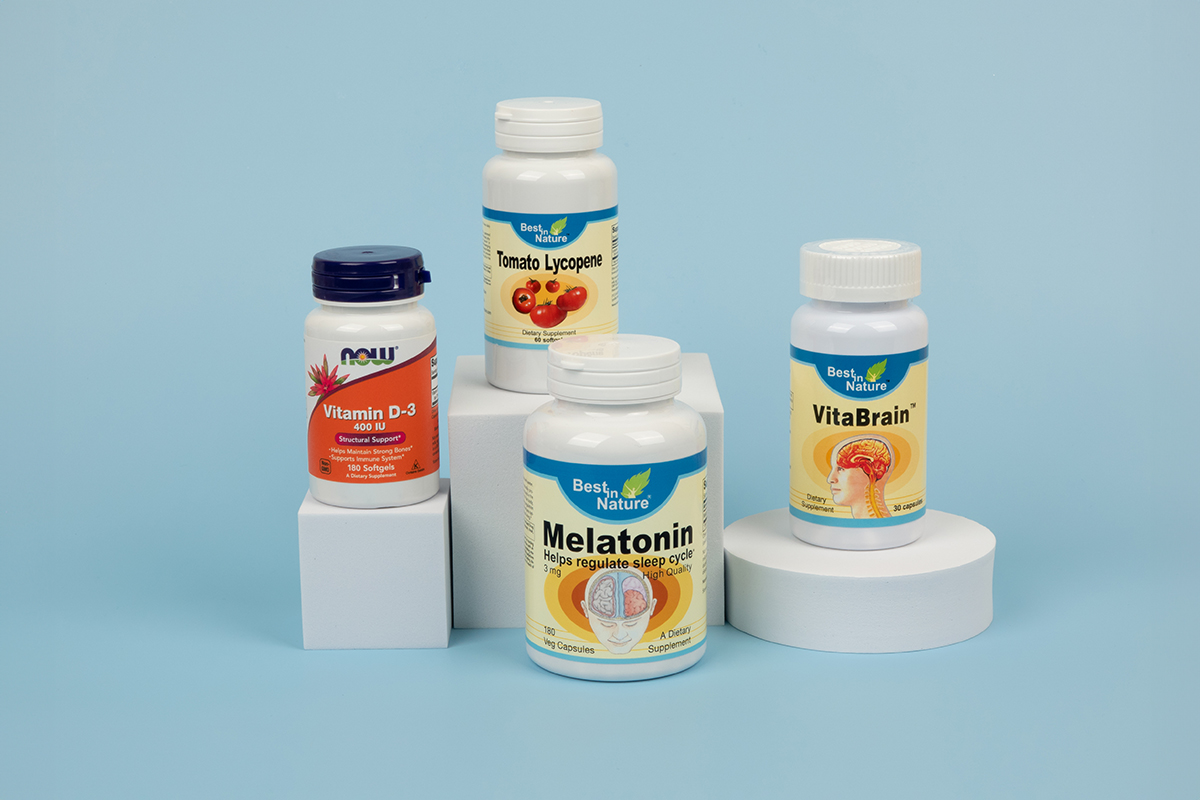
Reviewed and Updated: September 10th, 2024
Navigating the world of dietary supplements can sometimes feel like trying to decode a secret language. With so many terms, numbers, and ingredients listed on the labels, it’s easy to feel overwhelmed. But don’t worry—you’re not alone in this! In this article, we’re going to break down the basics of understanding dietary supplement labels so you can make informed choices about what you’re putting into your body. We’ll walk through everything from serving sizes to understanding potential allergens, ensuring you know exactly what you’re taking. By the end, you’ll feel confident navigating any supplement label with ease. Let’s get started!
What is Serving Size?
One of the first things to understand on the supplement label is serving size. Simply put, the serving size tells you the total amount of the supplement you should take at one time, as listed on the Supplement Facts label.
For example, if the label says “2 capsules,” that’s your serving size—easy, right? Now, here’s where it gets a bit more detailed: if the supplement comes in non-discrete units like liquids, the serving size might include decimals, like “1.5 milliliters.” And if there are multiple serving sizes listed, pay attention to the one at the top left, as that’s considered the primary serving size. The rest are just alternate options. Understanding these details helps you know exactly how much of the supplement you’re taking, so you can make the best choices for your health.
What is Servings Per Container?
When you’re browsing dietary supplements, one important detail to look for on the label is the “servings per container.” This tells you how many servings you’ll get out of the entire package based on the manufacturer’s recommended serving size.
For example, if the serving size is “2 capsules” and the bottle contains 60 capsules, you’re looking at 30 servings per container. However, there are some cases where it’s not quite as simple. Sometimes, a label might list more than one number or a range of servings per container. This usually happens if the product is intended for different groups, like different age ranges or life stages. Understanding servings per container helps you figure out how long the supplement will last and whether it fits your needs.
What is Amount Per Serving?
When you’re reading a dietary supplement label, another key detail to check is the "amount per serving." This tells you exactly how much of each dietary ingredient is in a single serving, whether it’s 50 mg of a vitamin in one pill or 5 mcg of a nutrient per teaspoon. It’s the specific quantity you’ll be getting each time you take that serving. Sometimes, you’ll see different amounts listed if the supplement is labeled for more than one group, like adults and pregnant women, or if there’s more than one serving option, such as one scoop versus two. Understanding the "amount per serving" helps you know precisely what you’re taking in each dose, so you can be sure you’re getting the right nutrients for your needs.
What is % (Percent) Daily Value?
Another important part of a dietary supplement label is the “% Daily Value” or “DV.” This percentage helps you understand how much a particular nutrient in one serving of the supplement contributes to your daily nutritional needs or RDI.
The FDA has set specific DVs for different groups, including:
- Adults and children aged 4 years and older
- Children aged 1 through 3 years
- Infants aged 1 to 12 months
- Pregnant and lactating women
These values are based on the Dietary Reference Intakes (DRIs), which are guidelines for how much of each nutrient you need each day. By checking the DV on a label, you can see if a supplement is giving you a lot or a little of what you need, helping you make better choices for your health.
Common Units on Supplement Labels
When you're reading a supplement label, you'll often come across a few different units of measurement. Understanding what these units mean can help you better gauge how much of a nutrient or ingredient you’re actually getting. Let’s break down some of the most common units you might see:
- Milligrams (mg): This is a metric unit of mass equal to one-thousandth of a gram. To give you a perspective, a dollar bill or a paper clip weight about a gram. You’ll frequently see vitamins and minerals listed in milligrams on labels, such as 100 mg of vitamin C.
- Micrograms (mcg): Even smaller than a milligram, a microgram is one-millionth of a gram. This unit is often used for nutrients that are needed in tiny amounts, like vitamin B12 or folate.
- Nanograms (ng): A nanogram is even smaller, one-billionth of a gram. You might not see this unit as often, but it’s used when dealing with very small amounts of certain substances.
- Colony Forming Units (CFU): If you’re taking probiotics, you’ll see this unit on the label. CFUs measure the number of live bacteria or yeast cells in the supplement that are capable of forming colonies. For example, a probiotic might contain 10 billion CFUs of beneficial bacteria.
- Fibrinolytic Units (FU): This unit is specific to enzymes like nattokinase, which is used to break down fibrin in the blood. Fibrinolytic units measure the enzyme’s activity rather than its mass, helping you understand how effective it might be.
Common Supplement Label Terms and What They Mean
When you're reading a dietary supplement label, you might come across a variety of terms that can seem a bit overwhelming. But don't worry, we're going to break down some of the most common terms you'll see, so you can feel confident about what you're taking.
- Dietary Supplement: This is exactly what it sounds like—a product meant to add to your diet. It can come in many forms, like a pill, capsule, tablet, or liquid, and it contains one or more dietary ingredients such as vitamins, minerals, herbs, amino acids, or other substances.
- Ingredients: When it comes to Ingredients on a supplement label, this term covers everything from the main nutrients, like vitamins and minerals, to any binders, fillers, or flavors used in the product. Note that the ingredients are listed in order of weight, so the first ingredient is the one used in the largest amount.
- Vitamins: These are essential organic compounds that your body needs in small amounts to function properly. These include familiar names like vitamins A, C, and E. They play crucial roles in your body’s metabolic processes, often acting as coenzymes, but they don’t provide energy or serve as building blocks.
- Minerals: These are naturally occurring inorganic substances, like calcium or iron, that are vital for maintaining your health. Think of them as the building blocks your body uses to function smoothly.
- Amino acids: These are the chemical building blocks of protein. Some supplements might focus on specific amino acids or blends, like branched-chain amino acids (leucine, valine, and isoleucine), which are popular in fitness circles.
- Herbs and Botanicals: These are terms you’ll see often, especially in supplements that come from plants. Herbs are specific plants used in cooking, teas, or for medicinal purposes. Botanicals refer to a broader category, including any plant or plant part used in supplements, as well as other natural substances like algae or fungi.
- Extracts: These are concentrated forms of plant materials, which are often used in supplements. They can be standardized to ensure a consistent amount of active ingredients.
- Probiotics: These are live bacteria and yeasts that are beneficial for gut health. Often found in supplements aimed at improving digestive health.
- Omega-3 Fatty Acids: These are essential fats that are important for heart and brain health. They’re commonly found in fish oil and flaxseed supplements.
- Antioxidants: These substances help protect your cells from damage caused by free radicals. Vitamins C and E, and minerals like selenium, are often included for their antioxidant properties.
- Enzymes: These are proteins that speed up chemical reactions in your body, helping with processes like digestion, improved absorption and energy production.
- Dosage: Refers to the recommended amount of a supplement you should take. It’s important to follow dosage instructions to avoid overuse or underuse.
Understanding these terms helps you make informed decisions about the supplements you choose, so you can confidently support your health goals.
Excipients (Other Ingredients)
When you're reading a dietary supplement label, it's not just the main ingredients like vitamins or minerals that matter. The label also lists Excipients—those "other ingredients" that often fly under the radar but play important roles in the product. Excipients include things like fillers, binders, and flavorings that are added to supplements for various reasons.
- Fillers: They might be used to give the supplement its shape or volume, especially in tablets or capsules.
- Binders: Help hold the ingredients together, ensuring that your pill doesn’t crumble before you take it.
- Flavorings and sweeteners: These are added to make the supplement taste better, which can be especially important for chewable tablets or liquids.
These non-dietary ingredients are listed on the label in descending order by weight, starting with the ingredient used in the largest amount. It's important to know that even though these might not be the active ingredients you're looking for, they can still impact your experience with the supplement. For example, if you're allergic to a specific artificial color or flavor, spotting it on the label can help you avoid a negative reaction.
Understanding the role of excipients and how they're listed on labels ensures you’re fully aware of everything you’re ingesting, not just the nutrients you're aiming to supplement.
Standardized Extracts
When you see “standardized” on a dietary supplement label, you might wonder what it means. Simply put, standardization is a process some manufacturers use to ensure that each batch of their product is consistent with the last. This involves identifying specific chemicals, called markers, to create a uniform product every time. It sounds like a great way to guarantee quality, right?
Well, here’s the catch: in the U.S., dietary supplements aren’t required to be standardized and there’s no official definition for the term. This means that “standardized” can be used differently by various companies. For some, it might genuinely refer to quality control, while for others, it could just mean they’re following the same recipe for each batch.
So, when you see “standardized” on a label, don’t automatically assume the product is of higher quality. It’s worth digging deeper to understand what the term really means for the product you’re considering.
Proprietary Ingredient or Blend
When you’re scanning a supplement label, you might notice something called a "proprietary blend." Why?
Under the Dietary Supplement Health Education Act of 1994 (DSHEA), companies can group several non-nutrient ingredients together under a single blend name, listing the total weight but not the exact amounts of each ingredient. This allows companies to protect their unique formulas from being copied by competitors.
Allergens
When you're checking a dietary supplement label, the allergens list is one of the most important sections to review, especially if you or someone in your household has food allergies. Let’s break down what you need to know.
The 9 Major Allergens on Labels
The FDA requires that any of the nine major allergens be clearly listed on supplement labels. These allergens are:
- Milk
- Eggs
- Fish (e.g., bass, flounder, cod)
- Shellfish (e.g., crab, lobster, shrimp)
- Tree nuts (e.g., almonds, pecans, walnuts)
- Peanuts
- Wheat
- Soybeans
- Sesame
Understanding “Allergen-Free” Claims?
You might see supplements labeled as “allergen-free.” While “gluten-free” has a specific legal definition, other “free” claims aren’t as tightly regulated. However, if a product claims to be “dairy-free,” for example, the FDA expects it to be accurate.
This means a products labelled “allergen-free” aren't guaranteed not to trigger an allergic reaction; therefore, it is always to be aware of severe allergy symptoms and seek for medical help if warranted.
Beware of Cross-Contamination
Even if an allergen isn’t listed, there’s a chance of cross-contamination. This is why it’s important that manufacturers declare when their equipment or facilities are used to process other products which do contain allergens.
Why This Matters
Food allergies are serious, affecting over 11 million Americans. The major allergens account for over 90% of allergic reactions, so knowing how to spot them on a label is crucial. Understanding these labels helps you make safer choices. When in doubt, it’s always best to contact the manufacturer for clarity.
GMP (Good Manufacturing Practices)
When choosing a dietary supplement, it’s important to know you’re getting a quality product. Let’s dive into what ensures that quality.
Good Manufacturing Practices (GMPs)
In 2007, the FDA set up rules called Good Manufacturing Practices (GMPs) to ensure supplements are made, stored, and labeled properly.
This means manufacturers must ensure their products contain the right ingredients, in the right amounts and are free from harmful contaminants like pesticides, heavy metals, or bacteria.
GMPs also help prevent mistakes in packaging and labeling, so what you see on the label is what’s actually in the bottle—no surprises. The FDA regularly inspects supplement facilities to make sure these rules are followed.
Understanding Expiration Dates on Supplements
Unlike food, supplements don’t "expire" in the traditional sense; they simply lose potency over time.
The FDA doesn't require expiration dates on supplement labels, so it is up to manufacturers to include them with the use of solid data.
The challenge is that while it’s easy to determine expiration dates for some ingredients, like vitamin C, it’s not as straightforward for others, especially botanicals. So, when you see an expiration date on your supplements, it’s more about ensuring they remain effective over time rather than a strict deadline for using them.
Bottom Line
There are many things to potentially look at and consider on supplement labels. You may not be able to research all of them for every product that you take, which is why it’s important to buy products from manufacturers that you trust. When considering new dietary supplements, this guide will help you navigate labels with ease.
* This article is for informational purposes only and doesn’t constitute medical advice. For immediate health concerns, please consult your physician.
These statements have not been evaluated by the Food and Drug Administration. Products are not intended to diagnose, treat, cure or prevent disease.
© 2024 Best in Nature All rights reserved






Validate your login
Sign In
Create New Account